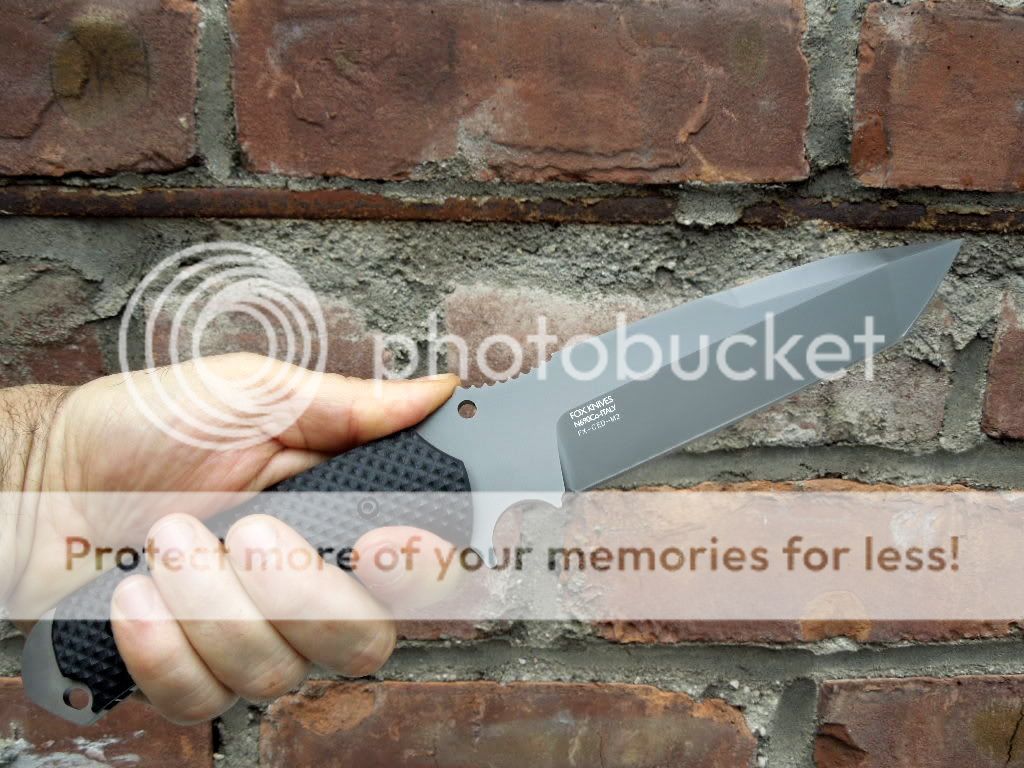- Joined
- Nov 1, 2000
- Messages
- 28,365
Wow. This looks incredible. I don’t wanna derail the thread but would be very interested in some more info on this guy. Knife budget is more than tapped right now but would love to get an order in with you someday! I love your work. As to the original point of this thread, I don’t have any tantos for EDC, but would like to get one. I can see their usefulness. One thing I do quite a bit is open bags of shavings to spread in horse stalls, and I can see the subpoint as being very useful. The belly of other blades tends to slide off the thin plastic at times.
It's a perfectly practical blade shape. I don't see an advantage or disadvantage to it though. If that's what you like, use it. If that's not your thing, it's not your thing.
That's a beauty Cm very stabby, nice profile.
I would suggest trying a "toothier" edge profile. Try stropping straight from a DMT coarse, or medium.One thing I do quite a bit is open bags of shavings to spread in horse stalls, and I can see the subpoint as being very useful. The belly of other blades tends to slide off the thin plastic at times.
This is a great idea. I’ll have to force myself to try it, I love the polished look so much but have been thinking of going toothy on my Emerson at least.I would suggest trying a "toothier" edge profile. Try stropping straight from a DMT coarse, or medium.
Higher hardness helps keep the "teeth" from laying over, while higher toughness will aid in keeping them from shearing (think 4V, M4, or other tool steel, even a quality HT on D2 would work nicely).
I’ve been surprised at how slicey I can get my knives after total burr removal at 120 grit on the Edge Pro. The novelty of a mirror edge just hasn’t gone away for me yet, so I can’t help but go as high as I have stones for, even if it’s not particularly practical.Yes, I grind my secondary bevel with a 120 grit and strop from that. Works great.
If by chance your Emerson is 154cm, that alloy loves a 220-400 grit edge.This is a great idea. I’ll have to force myself to try it, I love the polished look so much but have been thinking of going toothy on my Emerson at least.
Okay you’ve convinced me! My Emerson is hitting the 400 grit stone tonight. It’s at 1000 right now but I’m honestly not as in love with it on that knife as I am with my more conventional ones. What angle would you use? It’s at 21 DPS right now.If by chance your Emerson is 154cm, that alloy loves a 220-400 grit edge.
About two years ago I made the switch to sharpening to the alloys preference for the task at hand.
Work knife for plastics, bags, cardboard with 4V @ 64hrc I stay at 400 or below. Unless edge damage is to be repaired, then I will go to a DMT XXF, and work my way back down to 400 over successive touch ups.
EDC folder varies from DMT coarse to XXF, depending on alloy (normally s35vn or M4)
Kitchen knives depend on the media being cut, and style of cutting.
Sounds good, though I generally go slightly less since I tend to convex my edges.Okay you’ve convinced me! My Emerson is hitting the 400 grit stone tonight. It’s at 1000 right now but I’m honestly not as in love with it on that knife as I am with my more conventional ones. What angle would you use? It’s at 21 DPS right now.
If by chance your Emerson is 154cm, that alloy loves a 220-400 grit edge.
About two years ago I made the switch to sharpening to the alloys preference for the task at hand.
Work knife for plastics, bags, cardboard with 4V @ 64hrc I stay at 400 or below. Unless edge damage is to be repaired, then I will go to a DMT XXF, and work my way back down to 400 over successive touch ups.
EDC folder varies from DMT coarse to XXF, depending on alloy (normally s35vn or M4)
Kitchen knives depend on the media being cut, and style of cutting.
Take a look here:How do grit numbers compare between DMT stones and water stones (i.e. are 400 grit DMT stones and 400 grit water stones similar)? I’m currently using Naniwa Chosera stones.







Awesome! I will go to 400 grit at 18 I think then a touch of a micro. I apologize for the thread derail but this was very good information. Thanks! I think I’m ready for an Emerson tanto now lol.Sounds good, though I generally go slightly less since I tend to convex my edges.
Since the bevels are usually (an estimated) 15-17, I will often put a microbevel on to break the burr, then blend under very light pressure. Afterwards my strop will pull off any remaining burr that forms since my pressure is light when blending the primary and microbevel.
